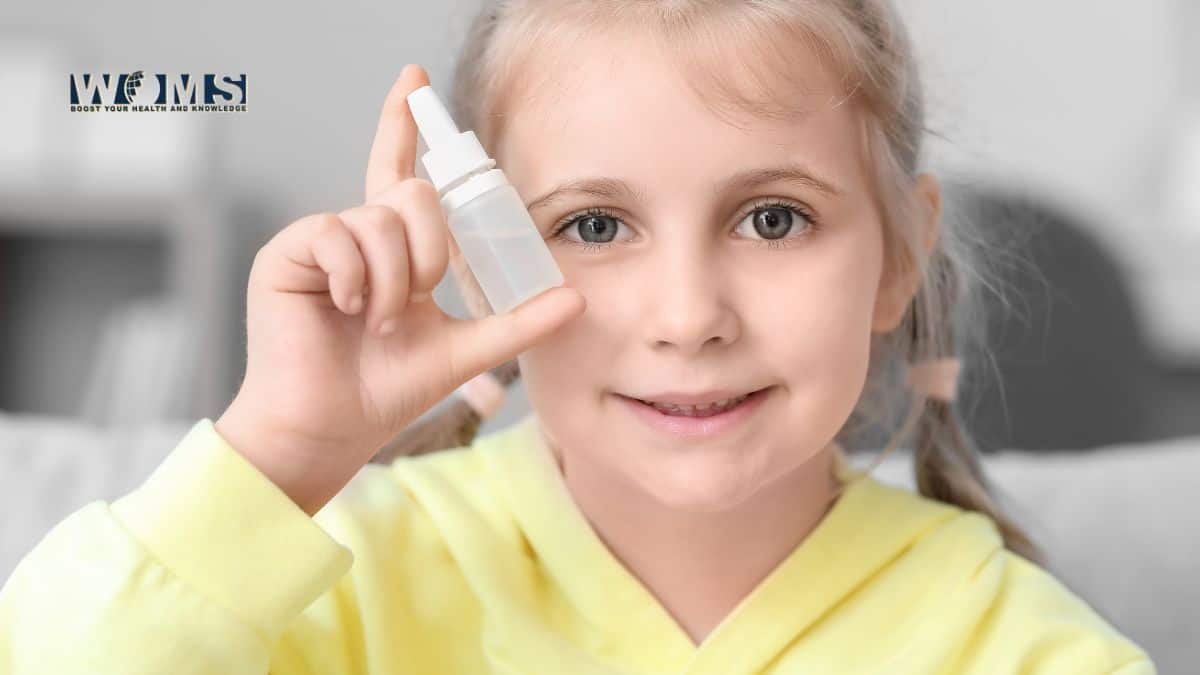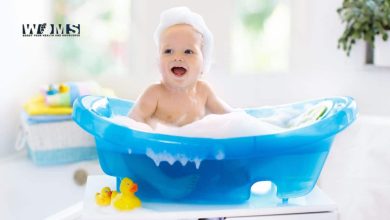Kids Eye Drops: Types, Safety, and Methods to Use

Kids eye drops are a common form of medication used to treat various eye conditions in children. In this article, we will discuss all that you need to know about kids eye drops. Besides focusing on various eye drops and methods to give them, we will also look into some common eye conditions in kids and their treatment. Here are some important points to consider regarding kids eye drops:
Types of Eye Drops for Kids
There are several types of eye drops used in children, depending on the specific eye condition. Some common categories include:
- Antibiotic Eye Drops: These treat bacterial eye infections such as conjunctivitis (pink eye).
- Antihistamine Eye Drops: Used to alleviate symptoms of allergic conjunctivitis caused by allergens like pollen or pet dander.
- Artificial Tears: These are used to relieve dry and irritated eyes. These are also known as carboxymethylcellulose eye drops.
- Corticosteroid Eye Drops: Used to reduce inflammation in certain eye conditions.
- Administration: Administering eye drops to kids can be challenging, especially for younger children who may resist the process. We give you some tips in our discussions.
- Frequency and Dosage: The dosage and frequency of eye drops depend on the child’s condition and the specific eye drops prescribed. Always follow the doctor’s instructions carefully.
- Storage: Store eye drops as per the manufacturer’s recommendations. Some eye drops may need refrigeration, while others can be kept at room temperature.
- Potential Side Effects: While generally safe when used as directed, some kids eye drops may cause mild side effects like temporary stinging or burning. If more severe side effects occur or if the child’s symptoms worsen, contact a healthcare professional.
- Contact Lenses: If a child wears contact lenses, it’s essential to consult with an eye care specialist before using any eye drops, as some may not be compatible with lenses.
How to Give Your Child Kids Eye Drops?
Administering kids eye drops can be challenging, but with some patience and preparation, it can be made more manageable. Here are some steps to help you give your child eye drops:
- Wash Hands: Before handling the eye drops or touching your child’s eyes, ensure you and your child have washed your hands thoroughly to avoid introducing germs.
- Explain the Process: Depending on your child’s age, explain to them what you are going to do and why the eye drops are necessary. Assure them that it will only take a moment and that it will help them feel better.
- Get in the Right Position: Depending on your child’s age and comfort level, you can have them sit down with their head tilted backward or lie down on their back. For younger children, it may be easier to have them lie down with their eyes closed. This is the suggested right position while administering kids eye drops.
- Hold the Eyelids: Gently hold the eyelids open with one hand. Use your thumb and forefinger to create a space around the eye’s lower lid. For older children, you can ask them to hold their own eyelids open if they feel comfortable doing so while giving them kids eye drops.
- Apply the Drops: Hold the eye drop bottle with the other hand and position it above the eye, aiming for the lower eyelid’s inside corner. Be careful not to touch the eye or eyelashes with the dropper tip. Squeeze the prescribed number of drops into your kid’s lower eyelid space.
- Close Eyes Gently: Ask your child to close their eyes gently. They can blink a few times to help spread the eye drops evenly over the eye’s surface.
- Wipe Excess Drops: If any kids eye drops spilled onto the cheeks, wipe them away gently with a clean tissue or a clean corner of a soft cloth.
- Reward and Praise: After giving the eye drops, offer positive reinforcement and praise your child for their cooperation.
If your child is anxious or having difficulty, take breaks, offer comfort and encouragement, and try again later if needed.
What To Do For Allergies?
Kids eye drops for allergies are specifically formulated to relieve eye allergy symptoms, such as itching, redness, and watering. These eye drops are designed to be safe and effective for children and can help alleviate discomfort caused by allergic reactions affecting the eyes.
Here are some common types of kids eye drops used for allergies:
- Anti-histamine Eye Drops: Anti-histamine eye drops work by blocking the action of histamine which is a chemical released by the immune system during an allergic reaction. Histamine is responsible for causing itching, redness, and swelling in the eyes. Anti-histamine eye drops can help relieve these symptoms and provide quick relief from eye allergies.
- Mast Cell Stabilizers: Mast cell stabilizer kids eye drops work by preventing the release of histamine and other inflammatory substances from mast cells, which are involved in the allergic response. These drops are particularly useful for preventing eye allergy symptoms when used regularly, even before exposure to allergens.
- Combination Eye Drops: Some eye drops may combine both antihistamines and mast cell stabilizers to provide dual-action relief from eye allergy symptoms. This combination kids eye drops can be convenient for children with multiple symptoms, such as itching and redness.
- Prescription Eye Drops: In cases of severe or persistent eye allergy symptoms, an ophthalmologist may prescribe stronger or more specialized eye drops to manage the condition effectively.
When using kids eye drops for allergies, it’s essential to follow the dosing instructions provided by the pediatrician or eye care specialist. Additionally, make sure the child’s hands and face are clean before administering the drops to avoid contamination.
Treatment For Kids Dry Eyes
Dry eyes can be uncomfortable and bothersome. If your child is experiencing dry eyes, here are some steps you can take to help alleviate the symptoms and improve eye comfort:
- Use Artificial Tears: Over-the-counter lubricating eye drops, also known as artificial tears, can help moisturize the eyes and relieve dryness. Use preservative-free eye drops if possible, especially if using them frequently throughout the day.
- Blink Regularly: Encourage your child to blink consciously, especially when using digital devices or engaging in activities that reduce the natural blink rate. Blinking helps spread tears across the surface of the eyes, providing moisture and reducing dryness.
- Take Regular Breaks from Screens: Prolonged screen time can lead to reduced blinking and exacerbate dry eye symptoms. Encourage your child to take frequent breaks from screens and engage in activities that involve looking at a distance.
- Maintain Proper Humidity: Dry indoor air can worsen dry eye symptoms. Use a humidifier, especially during dry seasons or in centrally heated or air-conditioned rooms, to maintain a comfortable humidity level.
- Stay Hydrated: Ensure your child drinks plenty of water throughout the day, as dehydration can affect eye moisture.
- Consult an Eye Care Specialist: If dry eye symptoms persist or worsen despite these self-care measures, or if your child experiences eye discomfort, redness, or other concerning symptoms, it’s essential to consult an eye care specialist. They can conduct a comprehensive eye examination to identify the underlying cause of dry eyes and recommend appropriate treatment.
In some cases, dry eyes may be caused by an underlying medical condition or certain medications. An eye care specialist can help diagnose and manage any underlying issues contributing to the dry eye condition.
How Do Prevent Kids’ Eye Infections?
Preventing eye infections in kids involves adopting good hygiene practices and promoting healthy habits. Here are some tips to help reduce the risk of eye infections in children:
Hand Washing: Teach your child the importance of washing their hands regularly, especially before touching their eyes or face. Handwashing helps prevent the transfer of germs and bacteria to the eyes, reducing the risk of infections.
Avoid Touching Eyes: Encourage your child to avoid touching their eyes with unwashed hands. Rubbing or touching the eyes can introduce bacteria and viruses, increasing the likelihood of infections.
Proper Use of Contact Lenses: If your child wears contact lenses, ensure they follow the eye care specialist’s instructions on hygiene and proper lens care. It’s essential to clean and store contact lenses properly to prevent eye infections.
Avoid Sharing Personal Items: Instruct your child not to share personal items like towels, washcloths, and eye makeup with others. Sharing these items can spread germs and increase the risk of eye infections.
Clean Eyeglasses: If your child wears eyeglasses, clean them regularly with the appropriate cleaning solution to remove bacteria and dirt.
Maintain Good Hygiene for Eye Drops and Ointments: If your child needs to use kids eye drops or ointments, ensure they wash their hands before and after application. Also, avoid touching the tip of the eye drop bottle or ointment tube to prevent contamination.
Protective Eyewear: When engaging in sports or activities that could cause eye injuries, ensure your child wears appropriate protective eyewear, such as goggles or safety glasses.
Healthy Diet: Provide a well-balanced diet that includes foods rich in essential nutrients, like vitamin A, which is crucial for maintaining healthy eyes.
Stay Up-to-Date with Vaccinations: Certain vaccinations, such as those for measles and rubella, can help prevent infections that may affect the eyes.
By following these preventive measures, you can significantly reduce the risk of eye infections in children.
Myopia Control
Atropine is a medication that, at low concentrations, has been found to slow down the progression of myopia in some children.
Here’s how atropine kids eye drops are used for myopia control:
Low-Dose Atropine Eye Drops: Low-concentration atropine eye drops (typically 0.01% or 0.025%) are used for myopia control. These concentrations are much lower than those used for other medical purposes.
Usage and Dosage: The eye drops are usually applied to both eyes once a day, typically at bedtime. It’s essential to follow the dosage instructions provided by the eye care specialist.
Mechanism of Action: Atropine eye drops work by temporarily relaxing the focusing muscles in the eye and dilating the pupil. This helps reduce eye strain associated with near work and may slow down the elongation of the eyeball, which is the main cause of myopia progression.
Effectiveness: Studies have shown that low-dose atropine eye drops can effectively slow down myopia progression in children. However, the response can vary from child to child, and not all children may experience the same level of control.
Duration of Treatment: Myopia control with atropine eye drops typically requires continuous use over an extended period. The eye care specialist will determine the appropriate duration of treatment based on the child’s individual needs.
Also read: Is too much screen time hurting your eyes? Time to find out.
Conclusion
Eye drops for kids serve various purposes and are essential for treating a wide range of eye conditions and discomforts. Some common types of kids eye drops include lubricating eye drops (artificial tears) to alleviate dryness, antibiotic eye drops for bacterial infections, antihistamine eye drops for allergy relief, and steroid eye drops for reducing inflammation. When using eye drops for kids, it’s crucial to follow the dosing instructions provided by a pediatrician or an eye care specialist.
FAQs
What are kids eye drops used for?
Kids’ eye drops are used to treat various eye conditions and discomforts in children, such as dry eyes, eye allergies, bacterial eye infections, and inflammation.
Are kids eye drops safe for all ages?
Not all eye drops are suitable for children of all ages. Some eye drops are formulated specifically for pediatric use, while others may not be recommended for younger children. Always consult a healthcare professional to ensure safe and appropriate use for your child’s age and condition.
Can I use adult eye drops for my child?
It’s essential to use eye drops specifically formulated for children. Adult eye drops may have different concentrations or ingredients that may not be safe or appropriate for children. Always use eye drops recommended for pediatric use.
Can kids eye drops be used for eye infections?
Yes, certain kids’ eye drops, such as antibiotic eye drops, are used to treat bacterial eye infections like conjunctivitis (pink eye). These eye drops help fight the infection and reduce associated symptoms.
Are there any side effects of kids eye drops?
While most kids’ eye drops are safe when used as directed, some may cause mild side effects like temporary stinging or burning. If more severe side effects occur or if the child’s symptoms worsen, contact a healthcare professional.
How often should I use kids eye drops?
The frequency of kids’ eye drops usage depends on the specific eye condition and the type of drops prescribed. Always follow the doctor’s instructions regarding the use and dosing of the eye drops.
Can eye drops be used with contact lenses?
Some kids eye drops are safe to use with contact lenses, but others may not be compatible. If your child wears contact lenses, it’s essential to consult with an ophthalmologist to ensure the eye drops are suitable for use with lenses.
Can eye drops prevent myopia progression?
Atropine eye drops, prescribed at low concentrations, have shown promise in slowing down myopia progression in some children. However, it’s essential to consult with an ophthalmologist to discuss the most suitable myopia control strategies for your child.
Are all kids eye drops preservative-free?
Not all kids’ eye drops are preservative-free. Some come with preservatives to extend shelf life, while others are preservative-free to reduce the risk of sensitivity or irritation. Preservative-free eye drops are generally recommended for frequent use, especially in young children.



